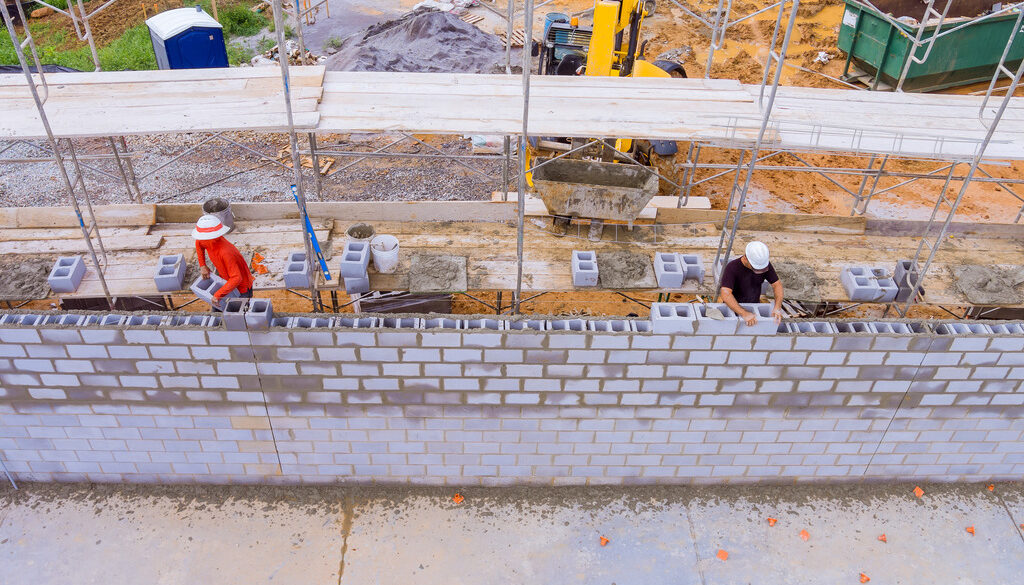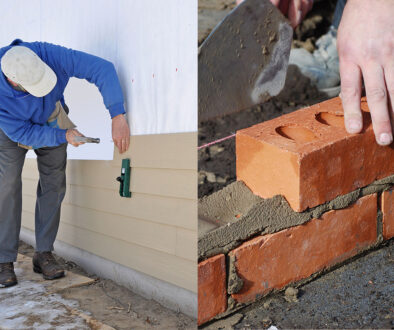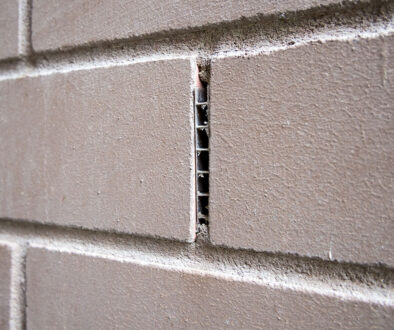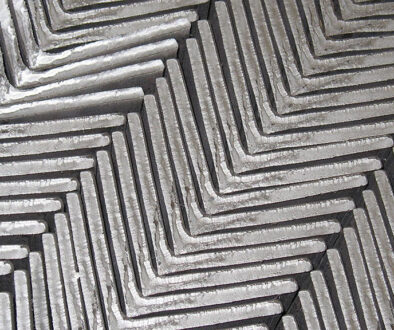How Do You Get Moisture Out of a Masonry Wall? A Step-by-Step Guide
Concrete masonry walls are at a lower risk for certain types of moisture damage than other types of construction. But, water trapped in the wrong place can compromise the structure and create both dangerous and costly problems. Keeping water out of the walls is important. Of equal importance is making sure moisture that does gather within the walls has a way to escape.
Here’s a guide on how to remove moisture from brick, concrete, & other masonry walls, stopping moisture issues, and minimizing water damage in your concrete masonry construction projects:
A Look at the Structural and Aesthetic Damage Caused by a Lack of Moisture Control
Before we dive into the ways to protect your masonry projects from water, let’s look at what can happen when you don’t install proper protection.
Too much water collecting or pooling within the walls of your construction project wears down the materials. Water pressing against the bricks weakens them, causing them to start cracking. This cracking leads to spalling, which is where entire chunks of the bricks start to fall off and expose the even more vulnerable interiors.
Excessive moisture in the walls can also wear down the framing of your structure. For example, water can begin to corrode bare or untreated lintels installed over doorways and windows. Unless your project used galvanized steel lintels , this is another area that will crack and expand. As it cracks, it also wears down the bricks and other materials around it.
As the bricks fall apart, they can damage everything surrounding them. This includes creating issues with the mortar (if such issues were not already present) and allowing water to wear down the exterior wall. In buildings with interior and exterior brick walls, this can damage the structure and ruin the building’s appearance. In all masonry projects, this can make the wall more likely to collapse. The damage can also start allowing water to reach protected, interior areas of the building.
For buildings in cold climates, the repeated freezing of excess water within the bricks can also cause expansion. This can lead to cracks, which then let more water enter. This can speed up the process of the wall’s deterioration. Without moisture controls, these things can cause severe damage that will take time and money to repair. They can also make the building unsafe.
First, Understand What Causes Moisture in Concrete Walls
Understanding what causes moisture infiltration in masonry walls is an important first step in preventing it. The porous nature of brick and concrete materials means that water will enter the walls. The things that can cause damage are the amount of water that is able to collect inside the walls, where that water collects, and how long it remains in the walls before exiting.
Issues in other layers of the wall or surrounding structure can cause too much water infiltration. This can also happen when the brick and mortar materials absorb and release water at different paces. Even a small crack in a wall cavity can be enough to allow too much water to pour in and start wearing down portions of the brick around it.
Where the water collects and how long it stays can also be the result of structural choices during the wall’s construction. Building the right layers into masonry walls is the key to encouraging airflow and allowing water to move through and out of the structure. We’ll look at how this works later. Mortar and debris droppings can also hinder the flow of water through the walls, as can the use of too many water repellents.
Moving water through walls requires the right wall assembly paired with the right materials. Without these things, your project will have moisture problems.
Second, Work with the Materials to Encourage Proper Air Infiltration
While rain, flooding, and snow can push water into walls, water vapor is the main source of moisture that collects in the walls of masonry projects. Water vapor moves through the porous concrete, brick, and insulation layers easily. But once inside, it can be finicky. It can get trapped within the bricks, the mortar, or other materials.
If too many water repellent materials are within the walls, it can force this vapor to collect in specific areas. As this water pools and continues pushing against the water repellents, it builds stress which causes fractures. Water moving through the walls can also change with temperature. For example, warmer water that hits cold surfaces inside the walls can create excess condensation . This then introduces even more water somewhere it doesn’t belong.
The solution is to make it simpler for water to move in and out of the walls with ease. Using water repellent layers only where necessary and placing them with care can help. Avoiding the use of materials that water vapor cannot pass through also makes the flow of water easier. Finally, building enough drainage points into the wall can keep water moving through and out when it does collect.
Third, Use Layering in Masonry Wall Assembly to Ease Drainage
You can manage the behavior of moisture within a wall through various methods. These methods need to be part of the initial construction of the building to work. A masonry wall includes several layers, depending on the type of wall it is and the purpose it serves in the project. A typical wall could include an interior brick and mortar layer, a thermal insulation layer, steel reinforcement , wall flashing, and the external layer of brick or concrete blocks.
There is also a type of masonry wall whose sole purpose is to keep moisture from penetrating the building itself. This is a cavity wall. It is a hollow wall made up of cement blocks. When present, the cavity wall itself is one of the layers in the project’s moisture control system.
There are ways to construct each layer that improve the project’s moisture management. Different types of brick pair better with certain mortars that allow equal water penetration so they expand and shrink at the same pace.
Using galvanized steel lintels ensures the support over openings will not create its own cracks or introduce rust to the walls around it. Cell weep vents layered at strategic points keep airflow and water moving through the walls without allowing bugs or debris to within them. Building in structures that catch debris droppings and suspend mortar keep the paths to the drainage plane in the wall clear so water can escape.
These strategic layers maintain the structural integrity of your masonry project. They help it withstand the dangers of dampness, condensation, and corrosion.
Meet MortarHalt: The Product Line That Saves Your Masonry Projects
To summarize what we’ve explained above, your masonry walls need proper ventilation, drainage, and layers of the right materials to prevent moisture problems from happening. Luckily, there is one unique product line that can achieve all three!
Meet MortarHalt: South Atlantic’s unique collection of materials designed specifically to protect and support your masonry projects. MortarHalt™ is engineered with a distinctive profile to break up and suspend mortar and debris droppings at two levels, allowing water to flow to the weep holes. Made up of 70% recycled content, MortarHalt can be used to create a strong but breathable barrier within masonry walls.
The strong, manufactured materials keep walls strong by holding their own tension and shape. At the same time, the openness of the materials allow water to flow and air to ventilate through the walls. Using MortarHalt products to cushion and surround the layers of your wall cavity decreases the likelihood of trapped water vapor and building moisture.
The MortarHalt product line uses this unique material in a variety of ways to support your construction project. The line includes rolls of MortarHalt or MortarCapture that can form an additional layer within your masonry wall and Weep Vents that can be installed at key points throughout your brick structure. Pairing these materials with our galvanized steel lintels and other masonry products is the best way to plan a build guaranteed to stand the test of time.
To learn more about the advantages of this product and how it can protect your masonry projects, check out our product page here: southatlanticllc.com/masonry/products/mortarhalt.
Learn More About South Atlantic’s American-Made Masonry Products
From our extensive inventory to our in-house galvanizing operation, South Atlantic has all the materials you need for your masonry and construction projects. We also have the team to deliver them quickly, without costly delays or hidden fees.
We are proud to support America’s workers and the building industry through our relationships with mills and suppliers across the country and our involvement in organizations like the Brick Industry Association and the Masonry Contractors Association of America.
To talk to one of our experienced team members today or request a quote for your design or project, fill out our form here.




